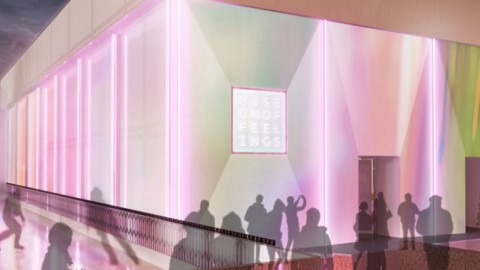
Finding disappointment at New York’s Museum of Feelings
Open from November 24th to December 15th, the Museum of Feelings has been generating buzz recently as New York’s latest pop-up, announced with a mysterious website and slick series of subway ads that made me want to visit if only to find out what the hell it is. The resulting trip gave me feelings, sure, but not the kind I was hoping for, and probably not those the organizers were going for either. When I first arrived outside the Museum of Feelings earlier this week, I was greeted with a line and display reminiscent of the Apple Store. Fitting, given that I…







